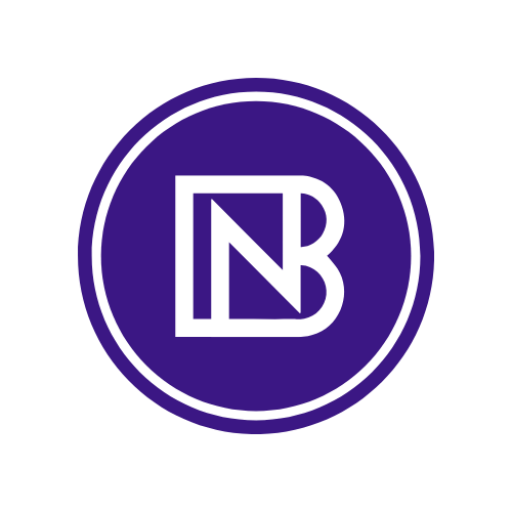Advertisements
Would you like to know if you can protect real data and build a career in an industry that requires millions of professionals?
begin in cybersecurity Today it makes sense: in 2025 there will be millions of unfilled vacancies and, in Spain, more than 83,000 registered applications in 2024.
The security affects your daily life: protects your sensitive information and keeps business and public services running.
You can get started without any formal experience if you set clear goals, master fundamentals like networking (TCP/IP, DNS), systems (Windows, Linux, macOS), and Python, and practice in secure environments with VirtualBox, TryHackMe, or Hack The Box.
In this guide, you'll find a practical, week-by-week path, home labs, tools valued by employers, and how to build a technical portfolio. You'll learn incrementally and ethically, supported by communities and conferences like DEF CON or initiatives like ISACA and ISC2.
Advertisements
There are no magic recipes: Progress comes with perseverance, curiosity, and respect for the law. Read critically and compare official sources before deciding on your training.
Context 2025-present: Why the cybersecurity field is growing and needs you
Today you see why companies and governments are urgently seeking technical profiles to defend digital services. By 2025, an estimated 3.5 million unfilled positions will be available globally. In Spain, INCIBE recorded more than 83,000 vacancies in 2024.
Real Demand: Global Vacancies and the Impact
Mass digitization increases the value of data and the exposure of systems. Organizations need talent for practical and compliance tasks.
- Common roles: SOC analyst, junior incident response technician, vulnerability analyst.
- Areas searched: threat analysis, ethical penetration testing, and security engineering.
- Sensitive sectors: health, finance, aviation and utilities.
Current risks: threats, data and information at stake
Threats are evolving rapidly. Ransomware, advanced phishing, and credential theft are common.
- Supply chain attacks.
- Account hijacking and loss of sensitive information.
- Small businesses as a target due to lack of resources.
«Automation and AI help detect patterns, but human judgment remains key.»
Continuing education and monitoring official reports and communities (TryHackMe, Hack The Box and organizations like INCIBE) help you stay up to date in this digital world.
Getting Started with Beginner Cybersecurity: A Practical Path for Your First Steps
A practical and measurable plan helps you convert interest into real results without exaggerated promises.
Define your goal and your level: what you can do today
Start by defining an immediate goal, for example completing a beginner's room on TryHackMe, and write down your level current: complete beginner, junior IT or already with some experience.
Write what can do Today is the first week: set up a lab with VirtualBox/VMware and create an account on an authorized platform.
Step-by-step learning: weekly goals and small projects
Set realistic goals: 5–7 hours per week, set up 1 lab, solve 1 challenge, and write 1 page of notes.
Suggested projects: a Python script to analyze logs, set up a basic firewall on your VM, or capture DNS/TCP/IP traffic for practice analysis.
- Measure progress: skills checklist, Kanban board, and GitHub portfolio with screenshots and notes.
- Alternates theory and practice: 30 min reading, 60 min practice, 15 min notes.
- Legality: Practice only in your lab and on authorized platforms; never on other systems.
It outlines a 12-week plan: networks and systems, basic scripting, SOC/CTF exercises, and an integrative project. Ask for help on forums, Discord, or local groups when you get stuck.
Fundamentals that really matter: Networking, operating systems, and basic programming
To build a solid foundation, it's important to master three practical pillars, which you'll see below. These concepts will give you the comprehension necessary for real-world tasks and to use tools safely.
Key networks and protocols (TCP/IP, DNS)
Think of TCP/IP as the rules packets follow as they travel between computers. DNS translates human-readable names into IP addresses, like a phone book.
Install Wireshark in your lab and observe how a DNS query resolves a domain. This helps you identify normal patterns versus anomalies.
Operating systems: Windows, Linux, and macOS
Understanding the three systems allows you to understand attack surfaces and security controls. Practice on virtual machines with VirtualBox or VMware.
On Linux, initial tasks: manage users, permissions, and services. On Windows, review the Event Viewer and local policies. Kali can only be used in controlled environments.
Programming with Python: Automation and Analysis
Learn how to read log files, filter out suspicious lines, and generate simple summaries. These small scripts automate repetitive tasks.
A practical itinerary: 2–3 weeks of networking, 2–3 weeks of operating systems, and 2–3 weeks of programming. Do short exercises every day and document commands and knowledge useful.
- Keep terminals, editors, and package managers up to date.
- Practice only in your own environment; respect the law and ethics.
- Use free, structured resources to reinforce these pillars.
Hands-on experience from home: lab, CTF, and real-world projects
Practicing in controlled environments turns theory into useful skills for the real world. Design a safe space for your team and follow ethical standards to avoid legal issues.
Your lab with VirtualBox or VMware: safe and legal practice
Configure an updated host and create isolated VMs. Use internal networks and snapshots to quickly revert changes.
Install Kali only in controlled environments. Add intentionally vulnerable target machines to practice risk-free exploitation and mitigation.
Learning platforms: TryHackMe, Hack The Box, and ranking
Sign up for guided tours and complete challenges with clear goals. Beginner rooms and themed tours teach you step by step.
Public ranking demonstrates consistency and practicality. Use it as evidence in interviews, but back it up with real-life projects.
Projects and contributions: open source and technical portfolio
Works on projects of the real world such as server hardening, log review scripts, or basic response playbooks.
- Document each project: objective, steps, results, and lessons.
- Collaborate on repositories: issues, tests, and documentation improvements.
- Publish your portfolio on GitHub and link to it in your professional profile.
"Practice only in authorized environments and ask permission before testing other people's systems."
Remember: Ethics and legality are as valuable as technical skill. The best way to gain practical experience is to make it visible and accountable.
Tools and concepts that employers value at the entry level
In junior positions You're expected to turn signals into clear actions. Teams look for practical evidence: SIEM searches, log readings, and concise reports.
SIEM, log analysis and real-time monitoring
A SOC analyst level Initial reviews alerts, enriches events and escalates incidents when appropriate.
Practice with public datasets and labs to create simple correlation queries. Learn how to read Windows, Linux, and web application logs to detect anomalies.
Ethical hacking and incident response in controlled environments
Use authorized environments to understand offensive techniques and improve defenses. Work with basic playbooks: suspected phishing, endpoint malware, and compromised credentials.
Conduct forensic exercises: analyze artifacts, set up timelines, and document findings. Save screenshots of your SIEM queries and simulated reports for your portfolio.
- Good practices: patch management, MFA and basic hardening.
- Use mind maps to remember research flows.
- Communicate findings clearly; communication is just as important as technical expertise.
"The best evidence is a well-documented real case: consultations, steps, and results."
If you want examples for your resume and how to present these jobs, check out a practical guide on security resume examples.
Soft skills and professional ethics: your advantage in your cybersecurity career
Professional ethics and the ability to listen are as important as the technical aspects.
Communicate clearly Reduce errors and accelerate incident response. Explain findings without jargon when speaking with non-technical teams.

Critical thinking helps you prioritize alerts and avoid noise in monitoring. Solve problems with clear, documented steps.
- Teamwork: Share documentation, use handoffs, and request peer review.
- Practical exercises: Present a simulated incident to a non-technical audience.
- Feedback: Ask your peers and mentors at ISACA, ISC2, or WiCyS for feedback.
Ethics demands clear boundaries for testing and responsible data management. Adopt routines of order, focus, and time management to maintain training.
"Your professional reputation is built on ethics and consistency."
Develop empathy with users and business areas. This approach improves real-world solutions and strengthens your cybersecurity career.
Training and community: courses, bootcamps, certifications, and networks
Training and connecting with a community accelerates your progress more than studying alone. Look for programs that integrate practical modules on networking, virtual machines, encryption, defense, and a final project. Serious bootcamps include guided labs, TryHackMe exercises, and preparation for the Security+ certification.
Before enrolling, check the curriculum, lab availability, and course support. Check the instructors, completion rates, and exam discounts.
Combine learning in line with practice in your lab. This helps you turn theory into visible results for your portfolio and work.
- Entry Certification: Security+ validates fundamentals and is useful for interviews.
- Professional network: Join ISACA, ISC2, or WiCyS and participate in local chapters.
- Online presence: showcases projects, platform rankings, and debates on LinkedIn.
"Check official certification and organization websites before paying."
You don't need any prior knowledge to get started, although IT fundamentals will help you get started. Find courses at line with hands-on labs and ask for feedback from peers and mentors before making a decision.
What's Changing Now: Cloud, AI, and Trends You Need to Understand
Cloud platforms and tools based on artificial intelligence They set trends you should be aware of. They change processes, roles, and the types of risks you'll see in the around.
Cloud Security (AWS, Azure, GCP): Practical Principles
Learn the basics: identity and access, network segmentation, encryption, and logging. These controls reduce the attack surface.
Familiarize yourself with each provider's native accounts, policies, and monitoring tools. Misconfigurations are a common vector; avoid this with templates, reviews, and automation.
AI applied to detection and prioritization
The artificial intelligence helps correlate events and prioritize signals among large volumes of dataThis improves the team's efficiency.
However, models have limits: bias, incomplete contexts, and false alarms. Always validate results with human analysis and maintain traceability.
- Practice access control and anomaly detection in guided labs.
- Review AWS, Azure, and GCP changelogs and security guides regularly.
- Evaluate tools based on risk and cost-benefit before adopting them.
"Combining solid fundamentals with new technologies multiplies your impact."
Final advice: continuous and critical thinking when using AI. This allows you to take advantage of trends without blindly relying on foolproof solutions.
Conclusion
Turning knowledge into practical evidence is what brings you closer to the market. Master concepts and systems, use good tools and document each project to show your progress.
Combining constant learning with small goals: networking practice, programming, and labs on platforms like TryHackMe or Hack The Box will give you visible results.
Develop technical and soft skills. Clear communication and ethics are just as important as technical ability for work and employer evaluation.
Validate programs and courses with official sources and consult organizations such as ISACA, ISC2, or WiCyS. Always protect sensitive information and practice only in authorized environments.
The field offers real opportunities (millions of vacancies by 2025), but progress depends on perseverance. Take a small step today, compare sources, and act with a critical mind and professional responsibility.



